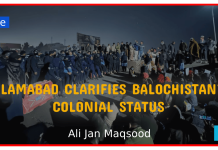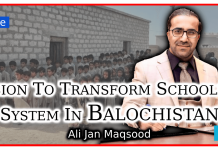While giving brief strategic overview of Indian and United States history During the cold war era there has never been continuous good relations between India and U.S. Their relationship has witnessed several ups and downs .The main hurdles behind this discontinuity of relationship being seeds of distrust that took roots during cold war due to India’s likeliness towards Russia. Despite being the head of Non Align Movement India had its strong ties with Russia .This was the main bone of contention between India and Russia. As in the start US had its ties with Pakistan in South Asian region because it had its interests in alliance with Pakistan main being to counter the threat of communism in South Asian region. As India was close to Russia US was always concerned about spread of communism in India which will ultimately have a domino effect on the whole region .Another serious concern of US regarding India was India’s Nuclear program .India was continuously engaged in acquiring Nuclear power and was engaged in military exercises with Russia, these were the main concerns of U.S that could turn the tables in cold war results.
The main events that took place between India and US during cold war era can be seen as On October 13th 1949, Indian Prime minister Nehru visited US .In this visit he announced India’s neutrality in cold war. In 1962, India and China went on war with each and US provided arms supports and air support to India. During India’s subsequent wars with Pakistan in 1965 and 1971, US were at Pakistan’s side because at that time US had stronger ties with Pakistan. Till 20th century there wasn’t significant improvement in the relations.
The year 2000 marks significant importance between the states because this was the point when relations between the countries started to develop. As after the cold war the US interest in Pakistan has ended and the rise of India as a growing economic power in the region made US build its relations with India. This was initiated by President Bill Clinton, after 22 years Clinton makes Presidential visit to India. This visit reduces the friction between the states to a large extent. President Clinton forces India to sign Nuclear Test Ban Treaty.
The Indo-US forum of science and technology was the product of this visit. From now on the relations between the two states start to track along a path of development.
The start of 21st century opened many gates to strengthen the relations between the two states. After Clinton Bush administration paved the way to further build up ties with India. First of all Bush administration removed the sanctions imposed on India after 1998 nuclear test in 2001.In 2005 a dialogue on energy security started between US secretary of States Condoleezza Rice and Indian officials .This dialogue continued inspire of the Indian ongoing engagement with Iran and sale of fighter planes to Pakistan by US.
The years 2009 and 2010 boosted mutual co-operation between two countries in economic and financial sector. India’s economy went up very fast and very high. On June 1st 2010 the first strategic dialogues are held by India in which Secretary Clinton claims India to their ‘Indispensably’ partnering 5th November 2010, President Obama makes a visit to India with an aim to help India take a permanent seat in United Nations Security Council. In 2012 Secretary of Defense Leon Panetta visits India and strengthens the military ties to the maximum.
During his tenure Man Mohan Singh met for the third time with President Obama to discuss the terms of the strategic relationship. The intensity of the meetings shows the worth of the interest on the both sides. Narindra Modi’s government comes in 2014; President Obama lifts the ban on Modi to enter US due to his involvement in massacre of Muslims in 2002 and invites him to US. When Modi visits US he makes multiple economic deals. one important thing PM Modi and President Obama sign an agreement on Memorandum of Understanding on import-export. Bank Obama announces $1billion help to India to build up low carbon alternative energy resources and also renewable energy material is exported to India.
In 2015 Obama makes his second visit to India as president to celebrate India’s republic day and also to celebrate growing Indo-US friendship.in the following year US secretary of defense Ashton Cantor and his Indian counterpart Man Mohar parikar renew the defense framework agreement for the next 10 years. In the following years US tried and is still trying to make India a member of NSG group without fulfilling the requirement of first accepting non=proliferation treaty. In 2016 India and US sign Logistic pact.
The journey of favorable relations between India and US started with 21st century and come a long way today. After getting disappointed from Pakistan US states shifted towards India and today they are dependent on each other and are benefitting a lot from the mutual relationship. Where on one side when US was having such good relations with India at the time US was having troubled relations with Pakistan as well as India was also having bad relations with Pakistan on the issue of Pakistan sponsoring terrorism. So, asking this fact under consideration it can be easily comprehended that US made such a good relations with India in such a short time to put pressure on Pakistan to fulfill its interest and in the fear of its growing relations with China in the form of CPEC.
US left no space in strengthening the defense of India .It co=operated with India in all sectors like Nuclear co-operation or it can be better put as over co-operation, joint military exercises, transfer of nuclear ,energy and military technology to India .Another dimension of this strategic engagement was space co-operation that is perfecting India’s missile system. In this area first US gave the license to India space research of Boeing’s settle lite system to construct communication satellites. New Delhi’s interest was fulfilled which was to build up stronger ties in the area of space exploration, missile launch and commercial space arena. Now it was important for the security of the region that India separates its civilian and nuclear missile which practically is impossible. Still India’s missiles lag behind at some points like accuracy, weight, reliability. Along with this other assistance in space technology is given to India like deployment of structures in space and development of penetration aids for India’s long-range missiles. All this assistance will make India able to count adversary’s missile at the time of pre-launch or boost.
Counter terrorism is regarded as very critical portion of their strategic relationship .Both of them claim that they are co-operating with each other in all possible ways to tackle terrorism .They share technology and information with each other and carry out joint exercises and training programs to tackle with terrorism .India and USA are having same approach towards sub conventional threats and to counter terrorism .During Afghanistan invasion India offered US intelligence surveillance, due to the politically unstable relations with Afghanistan.
Before this Indo-US alliance on counter-terrorism US was only working with Pakistan on this issue ,but due to some issues US had to shift its alliance towards India .As the origin of terrorism was from Afghanistan and Pakistan shared borders with Afghanistan so US gave millions and billions of dollars to Pakistan in the form of aid and it return demanded Pakistan’s bases to launch operations in Afghanistan ..Pakistan was co-operating with US on this issue in fact in the start they both carried out joint successful operations but with the passage of time co-operation from Pakistan’s side decreased due to which US got really upset. They said that Pakistan was covertly supporting terrorism to get more aid from US and to get its interests fulfilled.
After the Mumbai attacks that were carried out by militant organization Lashkar-e-taiba, India accused Pakistan for baking this attack and US said nothing in the favor of Pakistan. So, in this way both the countries U.S and India declare indirectly or directly, Pakistan to be a terrorist state. When both these states came on a common platform to counter- terrorism, Pakistan felt threat because it meant countering Pakistan indirectly. India in fact openly declares Pakistan to be a state that sponsor and harbors terrorist on the other hand US never says so but it also thinks the same about Pakistan.
One of the major concern on indo US strategic engagement is its realist reflection, as we argue about that indo US strategic engagement will boost arms race in the region, this is the reality that each state will pursue its own national interests, nations first top interest is its survival, for its survival it can take any measure as Thucydides quoted in Peloponnesian war that weak have to submit to the will of the powerful, So in modern day system states go to maximize and minimize their defense and survival measures according to neighboring or opponent state, as India’s main and historical threat is Pakistan, Pakistan is of the view that indo US strategic engagement will increase and maximize India’s already existing conventional superiority, so Pakistan can go for its own arms, respectively that will start arm race within region, that’s not only alarming situation for Pakistan and India but also have negative and severe implications on South Asian region. History has showed that whenever on state undergoes a power transition it directly or indirectly affects the whole region. Similar is the case with India due to military and nuclear assistance from US the strategic position of India has lifted to a certain level and this power transition has bought instability in the region .The fear of India growing defense will cause Pakistan to strengthen its own defense system by building more and more nuclear weapons to counter India. Not only these two countries but rest of the countries will also follow the suit and will start a nuclear buildup. This ultimately will lead to an arms race in the region in both terms in conventional as well as in nuclear arsenal.
NSG that is one of the main episode of Indo US strategic relationship, both are nuclear armed states, in south Asian region, there exists 2 nuclear states, Pakistan and India, in 1998, both tested their Nuclear weapons. Pakistan responded with 6 in reply of India 5 nuclear explosives, from that day, both are in perpetual nuclear arms race, twist came later when Mahnomen and Bush administration started working on civil nuclear deal, in 2005 India agreed to separate its civilian nuclear reactors and nuclear arms reactor, and allowed international atomic energy (IEA)commission to allow their inspectors to visit their sites, dealings were started from 2005, in 2008 India got the waver of NSG, nuclear suppliers group, India is not a member of nuclear supplier group, Pakistan and India have connected for the participation of the Nuclear Suppliers Group (NSG), a 48-country body that administers exchange atomic related fares and intends to guarantee that regular citizen exchange atomic materials is not redirected for military utilize. Both states understand that consideration in the Group would not just improve their esteem or status in the world wide legislative issues additionally legitimizes their import and fare of atomic material for tranquil application.
The NSG was made as a deliberate cartel in 1975 on the command of the United States. The cartel was built up in light of India’s May 18, 1974, purported serene atomic blast, “which was fuelled with plutonium created by a Canadian-provided reactor (CIRUS) infringing upon quiet atomic utilize affirmations.” Since section into compel in 1978, the NSG has been exchanging atomic material and innovation to the gatherings of Nuclear Non-Proliferation Treaty (NPT), who are watching thorough International Atomic Energy Agency shields.
As this strategic alliance between India and US developed very fast .Just one decade or decades before 21st century they were having hostilities and just as the 21st century started they are claiming and hailing of each other for being their indispensible partner. The fact that bought these two on common ground is that they both have same adversaries for now China and Pakistan .If an estimate is done to check which side is benefited the most then India has gained a lot in material terms and US has gained in terms of fulfilling its objectives which was to have a strong hold in South Asia .So, till now both the states are being benefited from this but the nature of international politics is well known .It is dynamic ,it keeps on changing .If two states are severe enemies on day the other day they may turn into friends because their interests match now.US has raised the defense of India to very high level without putting any restrains and check and balance they have been giving India nuclear technology.US even want6s to make India a part of NSG group now but still India has not sign NPT which is a condition to be the member of NSG .All the other states around the world are skeptical about this tie .
US has never pressurized India like it pressurizes Pakistan to comply with its policies ,US is reluctant to this with India because India is unlike Pakistan in this case .If something is in not in the interest of India ,it won’t just accept it at any deal or compensation ,it can also be called their strategic culture. Now, this strategic culture of Indian may p[rove harmful for US in near future.
Pakistan’s nuclear position in near future
Since this Indo-US partnership, Pakistan is very conscious about its defense. Pakistan has greater number of warheads then India but India’s nuclear weapons are advanced in technology. They claim Indo-US partnership to be China oriented but their practice show that it is Pakistan oriented .the technology that US gives to India to strengthen its defense against China, India uses it to strengthen its defense against Pakistan. India is stronger than Pakistan conventionally and after this deal India is also having nuclear superiority, which is a big threat to Pakistan. As this indo-US alliance has created a security dilemma in South Asia which has led to arms race in this region .Now in order to match its deterrence with India Pakistan also will have to fortify its defense against India for which it has to spend a lot on defense. Present economic situation of Pakistan in not such that it can spend a lot on defense as it is going through economic crisis and is under the burden of debt. In such a case if Pakistan is unable to fortify its defense its nuclear deterrence may fail.










